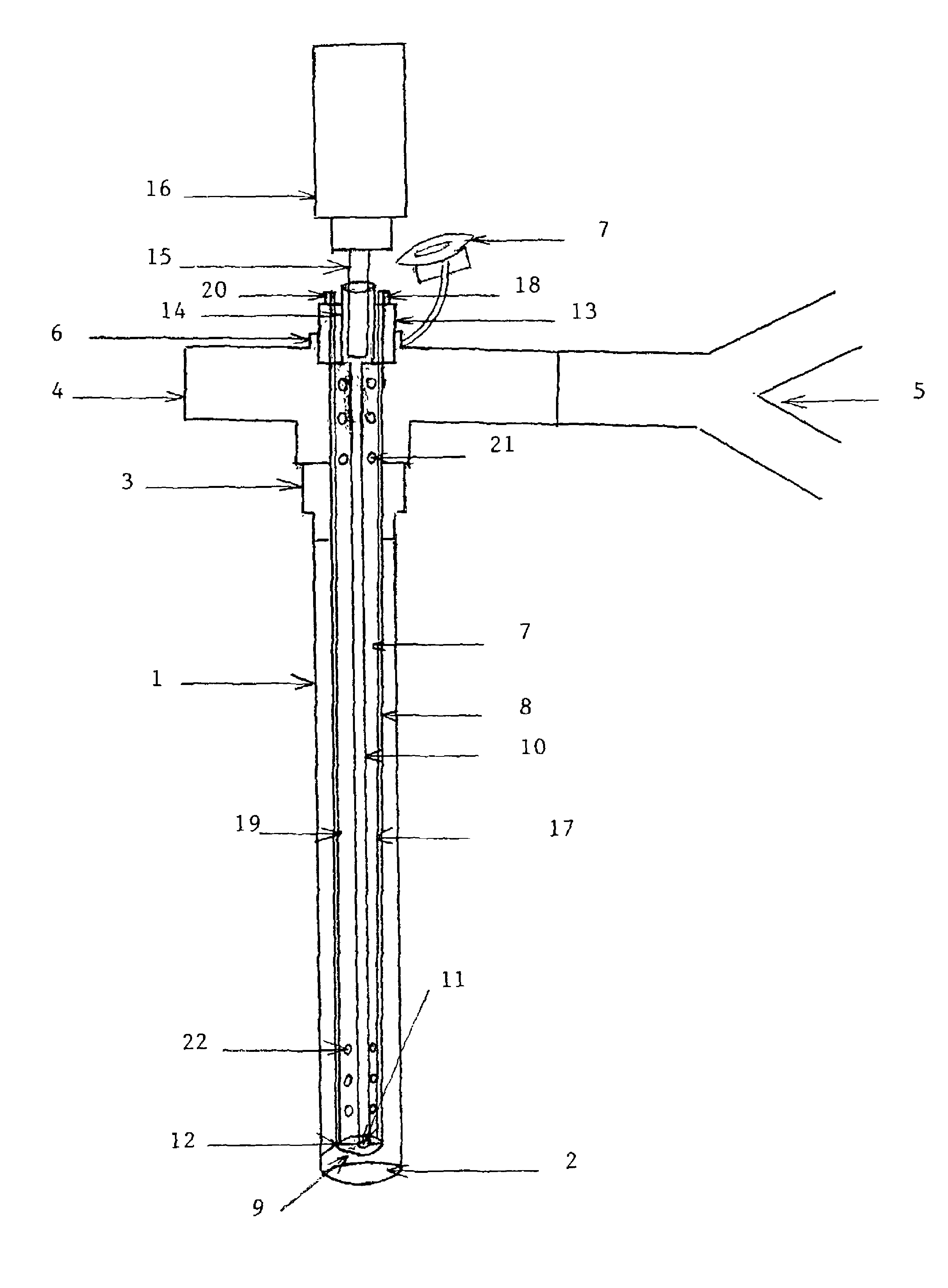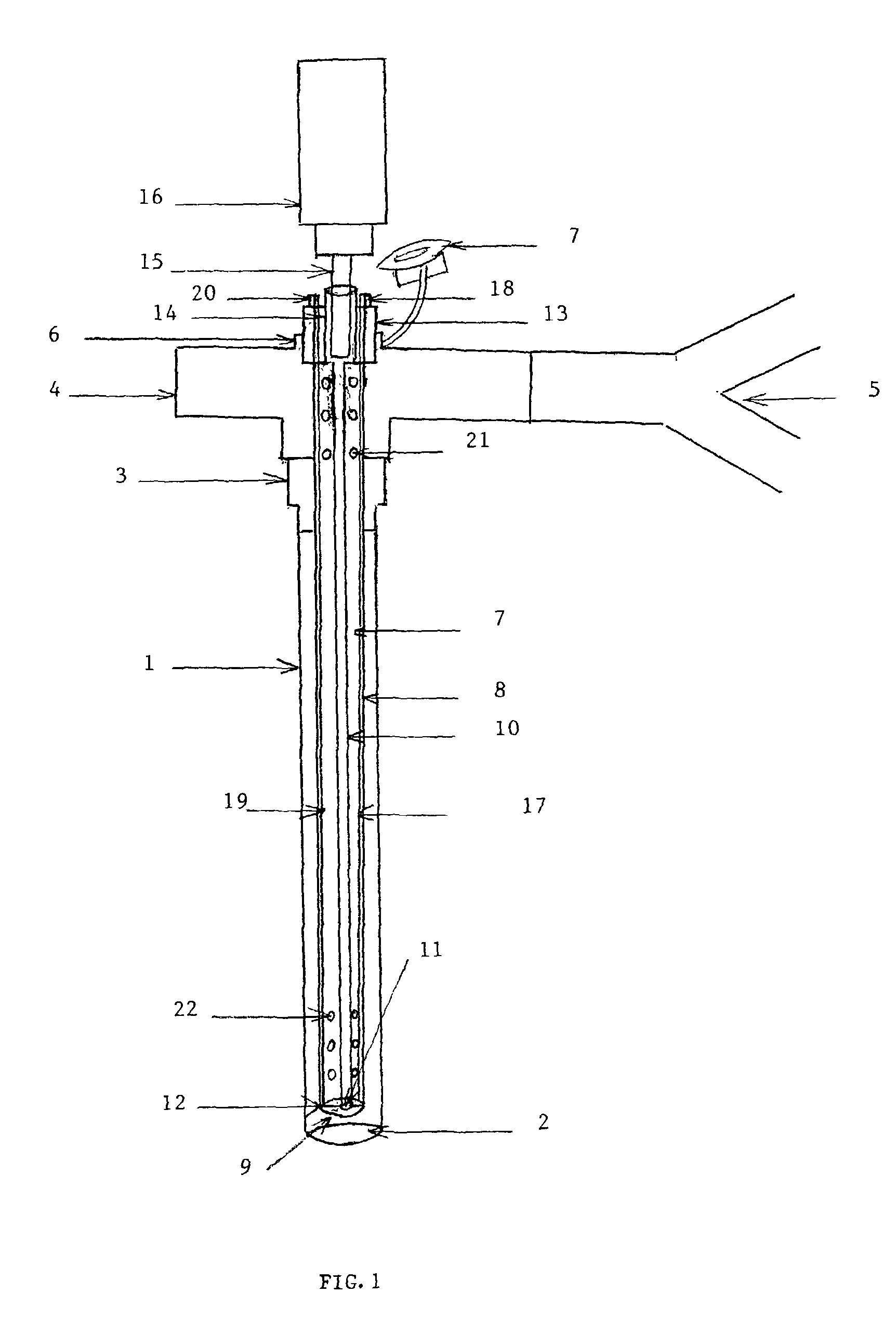Endotracheal tube with feature for delivering aerosolized medication
- Summary
- Abstract
- Description
- Claims
- Application Information
AI Technical Summary
Benefits of technology
Problems solved by technology
Method used
Image
Examples
Embodiment Construction
[0060]The present invention will now be described in detail by reference to the drawing figures, where as like parts as indicated by like reference numerals.
[0061]FIG. 1 is the first embodiment of the present invention that shows the longitudinal length of ‘AEROSOL DELIVERY APPARATUS III’. The device is demonstrated in the lumen of an endotracheal tube (1), which may be a conventional adult or pediatric endotracheal tube (ETT). The ETT is an elongated hollow tube constructed from a plastic material (polymer) and is approximately 34 cm long if an adult size and smaller if pediatric. The internal diameter of the ETT may vary from 2.5 mm to 10 mm, the external diameter from 3.5 mm to 13 mm and the thickness of the wall from 0.5 mm to 2 mm. The tube is a flexible elongated conduit with a concave surface on one side and a convex surface on the opposite side. The ETT (1) has a distal lumen (2) and a proximal adapter (3) which enables it to be connected to a T or an L shaped ventilator con...
PUM
 Login to View More
Login to View More Abstract
Description
Claims
Application Information
 Login to View More
Login to View More - R&D
- Intellectual Property
- Life Sciences
- Materials
- Tech Scout
- Unparalleled Data Quality
- Higher Quality Content
- 60% Fewer Hallucinations
Browse by: Latest US Patents, China's latest patents, Technical Efficacy Thesaurus, Application Domain, Technology Topic, Popular Technical Reports.
© 2025 PatSnap. All rights reserved.Legal|Privacy policy|Modern Slavery Act Transparency Statement|Sitemap|About US| Contact US: help@patsnap.com



